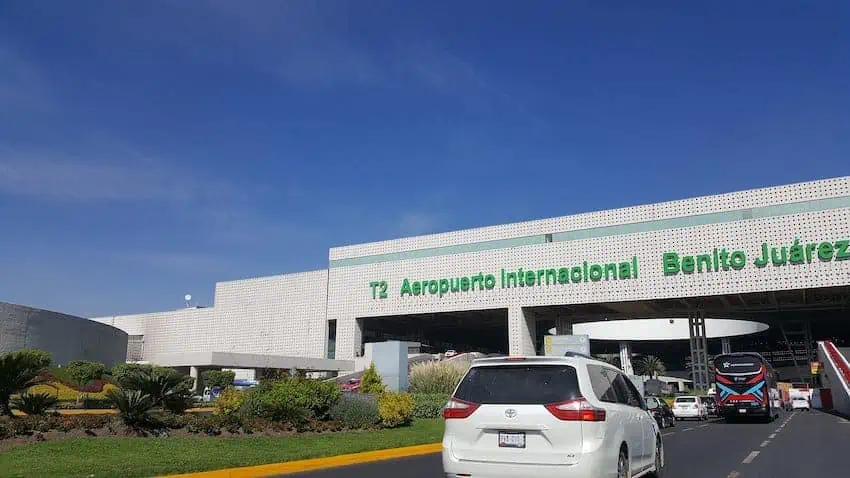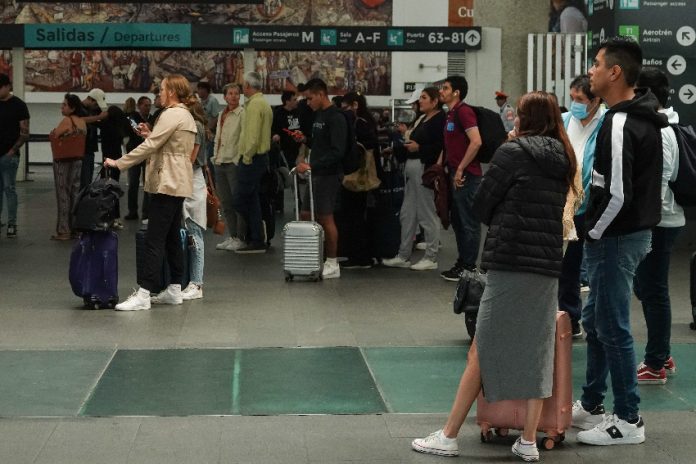The Infrastructure, Communications and Transportation Ministry (SICT) has ordered a reduction from 52 to 43 flights per hour at the Benito Juárez Mexico City International Airport (AICM) – a 20% reduction – effective Oct. 29.
In response to the airport’s saturation, the federal government had already enacted a “temporary” plan to reduce the number of flights arriving and departing, from 61 to 52 per hour, in 2022.

In its Thursday statement, the SICT said “this measure will be temporary and will remain in place as long as the saturation conditions at AICM persist” and that it is necessary to “safeguard the security” of the airport’s users and operating staff. According to a study carried out by the Federal Civil Aviation Agency (AFAC), the maximum number of passengers per hour that can be attended in an “optimal manner” in each terminal had been exceeded over 25 times this year.
However, the National Chamber of Air Transport (Canaero) has said such an adjustment will bring about “a massive cancellation of flights” and “put the country in an unfavorable situation” at an international level – a reference to Mexico’s quest to shed its hindering Category 2 aviation safety rating and return to a more favorable Category 1.
“The basic problem at AICM is not the capacity of [flights] per hour, but the age of the infrastructure and [its state of] deterioration,” Canaero said in its statement.
Part of the problem is that plane sizes have increased during the past 10 years, which means more passengers are crammed into the airport at any given time.“The airport is congested not only in the air but on the ground, mainly with the saturation of the buildings,” said Isidoro Pastor Román, the director of the new Felipe Ángeles International Airport (AIFA) north of Mexico City. “[AICM officials] are doing a study to see how to do [necessary] remodeling and adaptation work in Terminal 1.”

If flight traffic at AICM is reduced further, airlines might choose to move flights to AIFA, Pastor added. “In the Valley of México, the only space for growth in passenger demand — to meet excess demand and future growth — is AIFA,” he said.
In September 2022, AICM and airlines agreed to reduce the number of authorized landing and takeoff times (or slots) per hour, which reportedly led to Aeroméxico losing hundreds of slots per week. However, while unauthorized takeoffs were successfully halted, other airlines, such as Volaris and Viva Aerobus, continued to land at unauthorized times, often after hours.
New measures being evaluated by AICM would prohibit landings in unauthorized slots, meaning that an incoming aircraft could be diverted to another airport if they have been delayed by circumstances attributable to the airline, said Carlos Ignacio Velázquez Tiscareño, director of AICM. Canaero is asking that any scheduling adjustments not be made unilaterally.
“We respectfully request that the authorities include experts from the [airlines in a working group] to build a strategy that allows solving the needs of present and future demand, for the benefit of the economic and social development of the country,” Canaero said in its release.
A presidential decree went into effect to move cargo flights from AICM to the new Felipe Ángeles airport (AIFA) earlier this year. A report in Milenio in early August noted that 15 of 24 dedicated cargo companies operating at AICM have already moved their flights to AIFA, and that the total should be 100% by Sept. 1.
With reports from Reforma, Expansión, El Economista and Milenio
